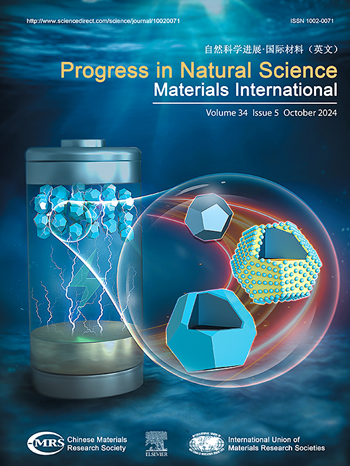Leveraging deep learning for accurate and automated interpretation of molecular IR and Raman spectra
IF 7.1
2区 材料科学
Q2 MATERIALS SCIENCE, MULTIDISCIPLINARY
Progress in Natural Science: Materials International
Pub Date : 2025-06-01
DOI:10.1016/j.pnsc.2025.02.014
引用次数: 0
Abstract
Evaluating molecular and material properties is a fundamental aspect of science with significant practical applications. While these properties can be inferred from spectra, traditional methods require meticulous calibration and rely heavily on the expertise and intuition of researchers. In this study, we evaluated four machine learning models — convolutional neural networks (CNN), multilayer perceptrons (MLP), Transformers, and gated recurrent units (GRU) — to predict key molecular properties, including the number of atoms, HOMO-LUMO gap, dipole moment, aromaticity, and first excitation energy. Using the QM9S dataset that includes IR and Raman spectra of 127468 molecules as a benchmark, we found that combining IR and Raman spectra consistently outperformed individual spectra in prediction accuracy. By incorporating data augmentation and model fusion, we further improved prediction accuracy by 2 %–7 % for all molecular properties. Finally, we proposed the best single or fused deep learning model to predict the number of atoms, HOMO-LUMO gap, dipole moment, aromaticity and first excitation energy with the accuracy of 99 %, 96 %, 83 %, 99 % and 97 %, respectively. The present work offers an automated and precise interpretation of IR and Raman spectra, enabling accurate predictions of several critical molecular properties.

利用深度学习对分子红外和拉曼光谱进行准确和自动的解释
评价分子和材料的性质是具有重要实际应用的科学的一个基本方面。虽然这些特性可以从光谱中推断出来,但传统的方法需要细致的校准,并且在很大程度上依赖于研究人员的专业知识和直觉。在这项研究中,我们评估了四种机器学习模型——卷积神经网络(CNN)、多层感知器(MLP)、变压器和门控循环单元(GRU)——来预测关键的分子性质,包括原子数、HOMO-LUMO间隙、偶极矩、芳香性和第一激发能。使用包含127468个分子的红外和拉曼光谱的QM9S数据集作为基准,我们发现红外和拉曼光谱结合在预测精度上始终优于单个光谱。通过结合数据增强和模型融合,我们进一步将所有分子性质的预测精度提高了2% - 7%。最后,我们提出了最佳的单一或融合深度学习模型来预测原子数、HOMO-LUMO间隙、偶极矩、芳香性和第一激发能,准确率分别为99%、96%、83%、99%和97%。目前的工作提供了红外和拉曼光谱的自动化和精确解释,能够准确预测几个关键的分子性质。
本文章由计算机程序翻译,如有差异,请以英文原文为准。
求助全文
约1分钟内获得全文
求助全文
来源期刊
CiteScore
8.60
自引率
2.10%
发文量
2812
审稿时长
49 days
期刊介绍:
Progress in Natural Science: Materials International provides scientists and engineers throughout the world with a central vehicle for the exchange and dissemination of basic theoretical studies and applied research of advanced materials. The emphasis is placed on original research, both analytical and experimental, which is of permanent interest to engineers and scientists, covering all aspects of new materials and technologies, such as, energy and environmental materials; advanced structural materials; advanced transportation materials, functional and electronic materials; nano-scale and amorphous materials; health and biological materials; materials modeling and simulation; materials characterization; and so on. The latest research achievements and innovative papers in basic theoretical studies and applied research of material science will be carefully selected and promptly reported. Thus, the aim of this Journal is to serve the global materials science and technology community with the latest research findings.
As a service to readers, an international bibliography of recent publications in advanced materials is published bimonthly.

 求助内容:
求助内容: 应助结果提醒方式:
应助结果提醒方式:


